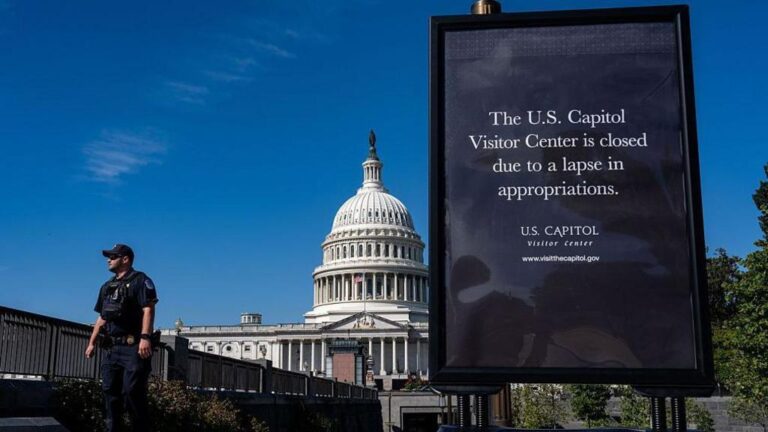Understanding the Impending Federal Government Shutdown: Causes, Effects, and Solutions
What Triggers a Federal Government Shutdown?
A federal government shutdown occurs when Congress fails to approve the necessary funding bills by the established deadline, causing a halt in many government operations. During such shutdowns, non-essential federal services are suspended, while critical functions‚ÄĒsuch as national defense and air traffic control‚ÄĒcontinue to operate, often with delayed compensation for staff. Hundreds of thousands of federal employees deemed non-essential face furloughs without pay, creating financial uncertainty for them and their families. Public amenities like national parks, museums, and visa processing centers typically close, inconveniencing millions who depend on these services.
The consequences of a shutdown extend well beyond government employees, affecting the broader economy and eroding public confidence in government efficiency. Key impacts include:
- Postponed Federal Assistance: Delays in social welfare payments such as Supplemental Nutrition Assistance Program (SNAP) benefits.
- Economic Contraction: Shutdowns can reduce GDP growth by billions due to halted government expenditures.
- Service Interruptions: Temporary closures of national parks and suspension of routine regulatory inspections.
| Sector | Shutdown Effect |
|---|---|
| Federal Employees | Unpaid furloughs for non-essential personnel |
| Public Services | Closure of parks, museums, and visa offices |
| Economy | Reduced government spending, slowing economic growth |
Immediate and Long-Term Effects on Public Services and Federal Workers
When a shutdown takes effect, essential government operations such as national security, emergency medical services, and air traffic control remain functional, albeit often understaffed. However, many non-essential agencies cease operations, leading to the closure of national parks, museums, and administrative offices. This deprives millions of Americans of access to routine government services. Federal employees labeled as non-essential are furloughed without pay, though some may be required to return to work retroactively once funding resumes.
The ripple effects also impact contractors and the wider economy. Below is an overview of typical shutdown consequences across various sectors:
| Category | Impact | Duration |
|---|---|---|
| Federal Employees | Furloughs without pay; some required to work | Until funding is restored |
| National Parks & Museums | Closed to visitors | Duration of shutdown |
| Social Security & Medicare | Payments generally continue uninterrupted | Minimal disruption |
| Federal Courts | Operations limited; delays in hearings and filings | Varies by jurisdiction |
Economic and National Security Ramifications of a Shutdown
The cessation of federal government activities sends shockwaves through the national economy and security apparatus. Financial services critical to millions‚ÄĒsuch as unemployment benefits and Small Business Administration loans‚ÄĒare paused, undermining consumer confidence and stalling economic momentum. Government contracts are delayed, tax refunds postponed, and consumer spending declines, collectively dampening GDP growth. Market volatility often increases as investors react to the uncertainty, complicating fiscal planning for both public and private sectors.
National security is also compromised during shutdowns. Key agencies like the Department of Defense and Homeland Security operate with reduced personnel, limiting intelligence operations, border security, and emergency responsiveness. Routine but vital activities, including airport security screenings and cybersecurity monitoring, may be scaled back, heightening vulnerabilities. The table below summarizes the shutdown’s impact on critical sectors:
| Sector | Impact | Level of Sensitivity |
|---|---|---|
| Economic Services | Suspended payments and delayed loans | High |
| Military & Defense | Reduced staffing and postponed operations | Medium |
| Public Safety | Limited security screenings | High |
| Intelligence & Cybersecurity | Reduced monitoring and analysis | Medium |
- Financial Pressure: Shutdowns restrict government cash flow, negatively affecting employment and consumer spending.
- Security Vulnerabilities: Reduced staffing and operational delays can weaken essential security measures.
- International Reputation: Prolonged shutdowns expose governance challenges, potentially diminishing U.S. influence globally.
Strategies for Lawmakers to Prevent or Lessen Shutdown Effects
To avert a federal government shutdown, legislators must engage in early, bipartisan negotiations focused on budget priorities, demonstrating a readiness to compromise. Transparent communication with both Congress and the public can build trust and reduce partisan deadlock. One effective tool is the use of continuing resolutions, which temporarily fund government operations, buying time to finalize comprehensive budget agreements without interrupting services.
- Begin budget discussions well before deadlines
- Set aside ideological differences to reach consensus
- Employ short-term funding bills as interim solutions
- Keep agencies informed to minimize operational disruptions
- Engage constituents to emphasize urgency and accountability
Proactive contingency planning, including prioritizing critical services, can help allocate limited resources effectively during uncertain funding periods. The following table illustrates how funding priorities might be assigned:
| Service Area | Priority Level | Consequences of Delay |
|---|---|---|
| National Security | High | Potential threats to public safety |
| Social Welfare Programs | Medium | Temporary interruption of benefits |
| Federal Workforce | High | Payroll suspensions and furloughs |
| Public Parks and Cultural Sites | Low | Possible temporary closures |
Summary: Navigating the Challenges of a Government Shutdown
As the United States nears a potential federal government shutdown, the implications for government operations, employees, and citizens are significant. While negotiations continue behind the scenes, the uncertainty highlights the urgent need for timely budget resolutions to maintain uninterrupted government services and safeguard national priorities. Staying informed about the effects and potential solutions is essential for all Americans as this situation unfolds. Ongoing coverage will provide updates on developments and legislative efforts to resolve the funding impasse.







